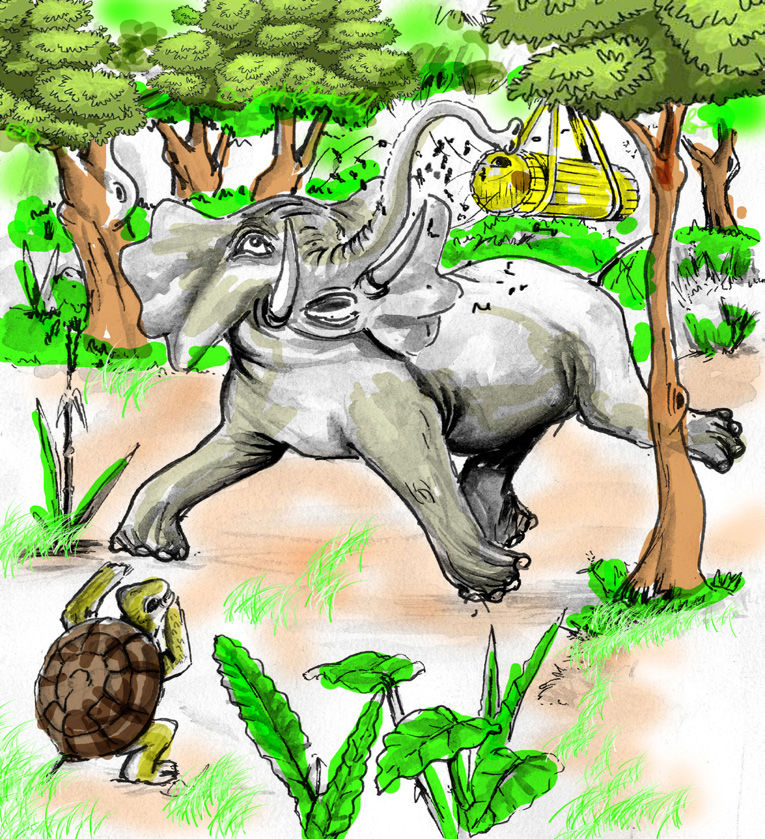Trickster stories
Listen as your teacher reads to you a trickster story, “The Tortoise and the Elephant”, then answer the questions that follow.

- What did Tortoise ask Elephant to do early one morning?
- What ‘good idea’ did Tortoise have?
- Do you find Elephant foolish? Explain your answer.
Points to note about trickster stories:
- Trickster stories are usually humorous and light-hearted. However, beneath the humour, they indirectly comment about the society.
- Important lessons such as the need to question other people’s motives are learnt through these stories.
- The stories usually bring out the contrast between brain (wit) and physical strength (brawn).
- Most narratives start and end with a particular statement or formula. For example, the trickster story you listened to started with the statement, ‘A long time ago’ and ended with ‘the tortoise is a very cunning person.’ The opening and closing statements vary from one community to another.
Pronunciation: /i/ and /i:/
1. Practise saying the following pairs of words loudly. Pay close attention to the underlined sounds. Your teacher will guide you in pronouncing them.
/i/ | /i:/ |
bid | bead |
Activity 1
Practise reading the following sentences.
- I saw a cheap chip.
- Let the baby sit on that seat.
- She did not heed my advice; instead she hid behind the box.
- The children were asked to bid using beads.
